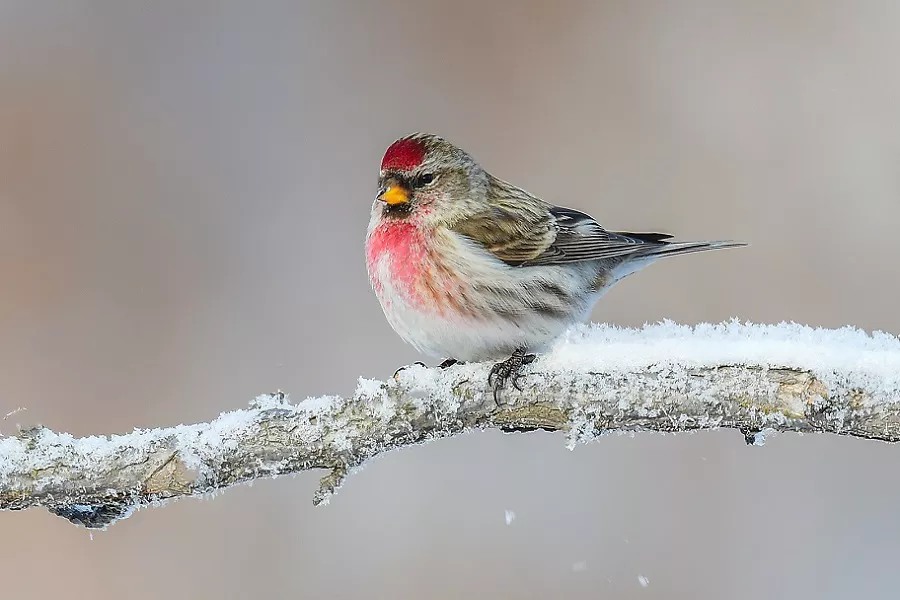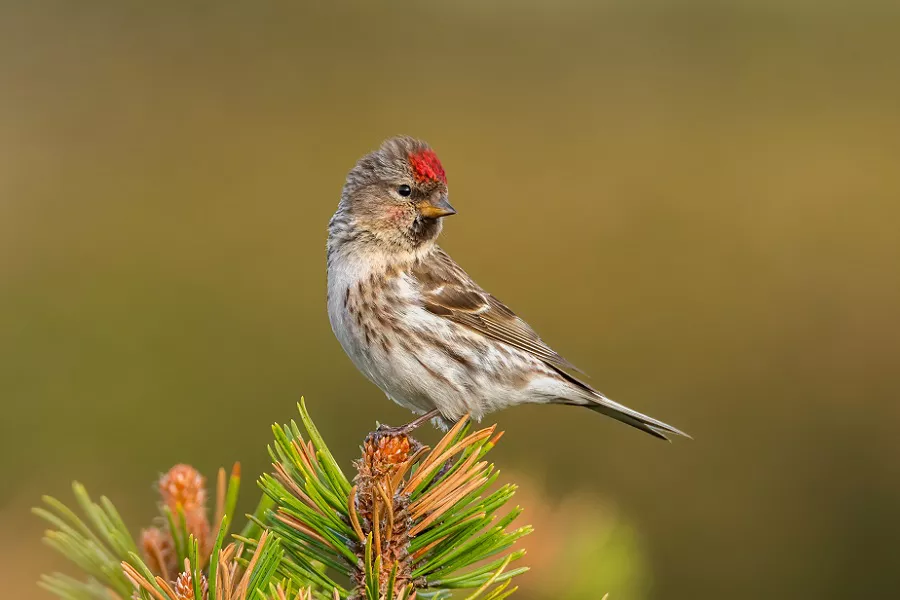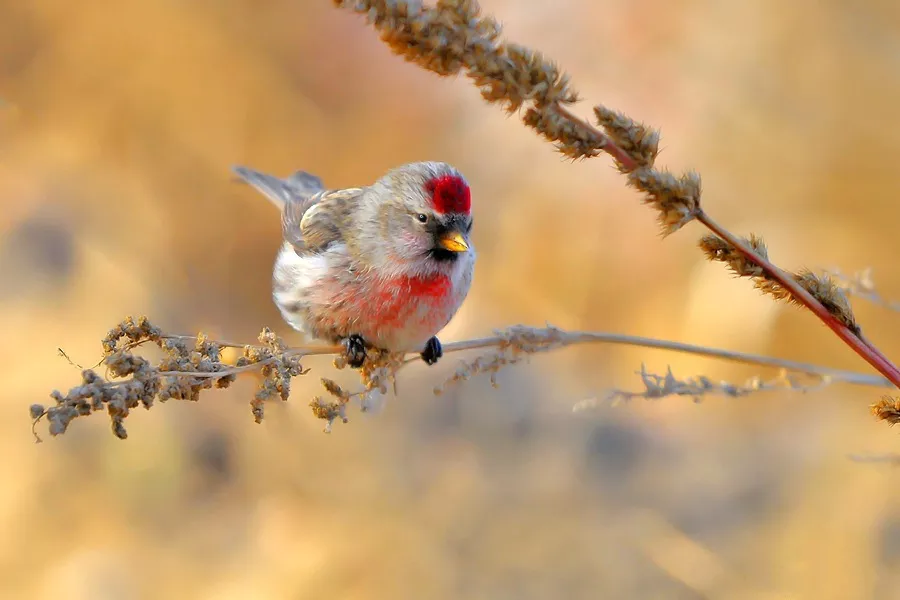Redpolls are small, charming birds belonging to the finch family, Fringillidae, native to the northern regions of Eurasia and North America. They are renowned for their delightful presence and vibrant plumage, making them a favorite among birdwatchers and nature enthusiasts. The genus Carduelis encompasses several species of redpolls, with the Common Redpoll (Carduelis flammea) and Lesser Redpoll (Carduelis cabaret) being two of the most well-known. While they both share certain characteristics, there are some key differences that set them apart. In this article, we delve into the distinctions between the Common Redpoll and Lesser Redpoll, shedding light on their physical attributes, geographic distribution, and behavioral traits.
Physical Characteristics:
One of the primary distinctions between the Common Redpoll and Lesser Redpoll lies in their physical attributes.
Size Comparison: Common Redpolls tend to be slightly larger than their Lesser counterparts, with a typical length ranging from 5 to 6 inches (12 to 15 centimeters). Lesser Redpolls, on the other hand, are slightly smaller, measuring around 4.5 to 5 inches (11 to 13 centimeters) in length.
Plumage: Both species exhibit a brownish-grey overall plumage, but the Common Redpoll boasts a distinctive red crown and breast, which are absent in the Lesser Redpoll. This red coloring is particularly pronounced in males during the breeding season, serving as a striking visual characteristic.
Bill Color and Size: Another noticeable difference lies in their bills. Common Redpolls typically have larger and more robust bills compared to the slender bills of Lesser Redpolls. The bill coloration can vary between individuals and populations, but it generally leans towards a yellowish hue in Common Redpolls and a darker brown in Lesser Redpolls.
Head Markings: The head markings provide another distinguishing feature. The common redpoll boasts a small black chin patch, a black bib extending down to the upper chest, and a pale or white moustache stripe behind the eye. In contrast, the lesser redpoll possesses a pale chin and lacks the distinct black bib and moustache stripe. Instead, it may display faint streaking around the cheeks.

Common Redpoll
Geographic Distribution:
Common Redpolls: Common Redpolls have a broader geographic distribution, inhabiting the northern parts of North America, Europe, and Asia. They are found in a variety of habitats, including open woodlands, tundra, and scrublands.
Lesser Redpolls: Lesser Redpolls have a more restricted distribution, primarily residing in Europe and western Asia. They favor woodlands, heathlands, and gardens, where they feed on seeds from various plants.
Behavioral Traits:
Examining the behavioral traits of Common and Lesser Redpolls offers insights into their ecological roles and adaptations.
FeedingHabits: Common Redpolls and Lesser Redpolls share similar feeding habits, predominantly consuming seeds from birch and alder trees. They are highly adapted to extracting seeds from cones and can often be observed hanging upside down to access their food source.
Nesting Behavior: While both species construct cup-shaped nests using twigs, grass, and feathers, Common Redpolls tend to build their nests higher in trees, while Lesser Redpolls prefer lower shrubs and bushes.
Vocalizations: One of the easiest ways to distinguish between the Common and Lesser Redpolls is by their vocalizations. While both species have a similar chattering call, the Lesser Redpoll’s song is slightly shorter and more melodic, with a trilling quality that is absent from the Common Redpoll’s song. The Lesser Redpoll is also known for its distinctive “bubbling” call, which it uses to communicate with other members of its flock.

Lesser Redpoll
Conservation Status:
Both the Common Redpoll and Lesser Redpoll are considered to be of least concern in terms of conservation status. However, monitoring their populations is crucial due to potential environmental changes and habitat degradation that may affect their breeding and foraging grounds.
Conclusion:
Understanding the distinctions between the Common Redpoll and Lesser Redpoll allows bird enthusiasts and researchers to appreciate the unique characteristics of these captivating finch species. While they share similarities in their vocalizations, feeding habits, and nesting behavior, differences in size, plumage, bill shape, and geographic distribution set them apart. By preserving their habitats and continuing to monitor their populations, we can ensure the continued presence and conservation of these charming redpoll species for future generations to admire and enjoy.


 Facebook
Facebook  Instagram
Instagram  Youtube
Youtube 